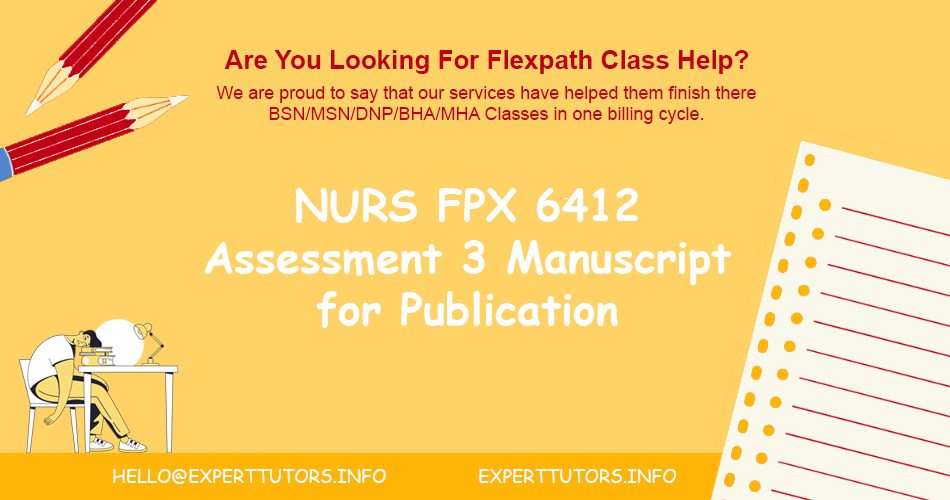Manuscript for Publication
Name
Capella University
6412:
Dr. Name
March, 2024
The Electronic Treatment Administration Record (eTAR) system modernizes and digitizes the monitoring and documentation of medication and treatment regimens for residents in healthcare settings. This system replaces traditional paper-based Medication Administration and Treatment Administration Records with electronic records. The eTAR platform streamlines the management of medication orders and distributions, facilitating the effortless generation of comprehensive reports (Adams et al., 2021). Enhanced security measures, such as integrating patient photographs and employing barcode technology, provide robust safeguards for both residents and healthcare personnel, ensuring a high level of safety and accuracy in treatment administration.
eTAR for an Interprofessional Care Team/Stakeholders
Collaboration among healthcare teams and stakeholders enhances patient safety and quality of care, especially for patients with chronic diseases and complex symptoms. Multidisciplinary expertise is vital for coordinated responses across medical fields. The integration and exchange of information expertise and the cultivation of a team-oriented approach, irrespective of geographical barriers, become imperative. Tools like the Electronic Treatment Administration Record (eTAR), a component of Electronic Health Records (EHR) systems, emerge as key facilitators in this collaborative landscape (Anandkumar et al., 2021). They serve multiple functions, including care coordination, collective effort in treatment planning, and shared decision-making. These tools are recognized as instrumental in delivering high-quality, value-based care.
EHRs also play a significant role in supporting interdisciplinary teamwork during hospital ward rounds. However, their effectiveness hinges on addressing broader design challenges, such as the social ergonomics of involved devices, integrating paper records and improving information systems. EHRs offer numerous advantages in care coordination, notably in gathering, accessing, and utilizing patient data and in aiding healthcare professionals in clinical decision-making processes. In particular, eTAR aids medical professionals in enhancing their collective understanding of patients’ medical histories and timelines. The availability of portable notes through EHRs heightens awareness among medical specialists (Hunt & Chakraborty, 2020). For instance, practitioners in outpatient clinics have observed that the comprehensive integration of various specialties into the EHR system facilitates smoother patient referrals between departments.
The proficient application of the eTAR system significantly influences the quality of medical records. A user-friendly, standardized eTAR format promotes rapid data entry, enabling healthcare professionals to diagnose and treat without unnecessary delays. Moreover, a standardized eTAR format aids in streamlining referral processes between different healthcare facilities and improves the efficiency of medical record creation in clinics. Nurse informaticists, who are integral in inputting and managing information in the eTAR system, generally hold positive views regarding its use and effectiveness. They recognize that EHRs, by precisely recording patients’ personal and medical information, can significantly optimize their practice and workflow (Artus & Gibson, 2022). Notably, there is a positive correlation between the use of EHRs, their quality, and the satisfaction levels of users, underscoring the benefits of these digital tools in contemporary healthcare settings.
Enhancing Clinical Workflow through Advanced eTAR Systems for Safer Healthcare Practices
The utilization of eTAR technology brings substantial improvements to clinical workflow, safe practices, and the quality of patient outcomes. This advanced system simplifies the management of patient medications for clinicians, bolstering the decision-making process and elevating the overall standard of care. Nurse informaticists find eTAR particularly beneficial in minimizing data entry errors, leading to a significant reduction in medication-related mistakes. Furthermore, eTAR’s refined workflow empowers patients by providing them with online access to their medical records through a patient portal, enabling them to view, print, and share their health information with healthcare providers. This accessibility not only fosters better patient advocacy but also streamlines the medication reconciliation process, making it easier to maintain and update medication lists during patient visits (Janett & Yeracaris, 2020).
The eTAR system’s integration of barcode technology promotes safe healthcare practices by reducing manual data entry and the risk of human error. Automated checks decrease the possibility of administering incorrect medications or treatments, contributing to improved healthcare quality.
- Automated reminders in the eTAR system to prevent missed or delayed medications.
- Direct management of medication and treatment orders through the eTAR interface, enabling staff to handle prescriptions efficiently.
- Flexibility to stop, reorder, or hold medications during Med Pass sessions.
- Automatic updates of dosages for replacement medications.
- Integration of emergency and notification-based medications and treatments into the eTAR system.
- Capability for staff to review or add documentation during or after medication administration.
- Efficient management of emergency stock medications and medical directives by staff members.
These advancements in the eTAR system streamline the clinical workflow and significantly contribute to safer, more effective healthcare delivery and superior patient outcomes (Kluwe et al., 2020).
Strategic Plan of the Organization or Practice Setting
Implementing the eTAR (Electronic Treatment Administration Record) system aligns with healthcare organizations’ strategic objectives by fostering a financially sustainable medical environment. Though initial investments in technology and training are required, a fully operational eTAR system promises long-term cost reductions and enhanced operational efficiency, yielding a favorable return on investment. eTAR’s ability to elevate patient safety and improve the quality of healthcare is a key aspect of its value. By increasing clarity in prescriptions and enhancing communication among healthcare providers and patients, eTAR addresses critical safety concerns. Notably, nurses, who constitute about 50% of the healthcare workforce and are the predominant users of electronic medical records, play a central role in this technological shift. Evidence supports the effectiveness of electronic medication administration records; these systems boost efficiency, minimize adverse medication events, and strengthen patient safety. A notable reduction in medication administration errors—ranging from 2.8% to 16%—has been observed with eTAR’s deployment (Gouda & Ezekowitz, 2023).
In practice settings, eTAR brings numerous advantages. It reduces the time healthcare providers spend on documentation, thereby streamlining operations. The system enhances communication within clinical teams and supports the creation of essential tools like “huddle sheets,” which organize patient appointments and issues. eTAR features such as patient problem lists, to-do lists, and task assignments serve as vital communication aids. The reduced workload and improved efficiency contribute to a more manageable environment for staff. Moreover, eTAR significantly boosts workflow and productivity, directly impacting patient care quality. To ensure successful implementation, healthcare teams must adopt a comprehensive strategy, including setting up a rigorous testing protocol to identify potential confusion or issues during rollout. The effectiveness of the implementation strategy is crucial, as it determines the system’s functionality and the satisfaction of the workforce using it. This strategic approach to incorporating eTAR within healthcare settings underscores its potential to transform practices by enhancing efficiency, safety, and quality of care (Lawrentschuk, 2023).
Recommendations to Improve eTAR to Support Stakeholder Needs
When fully implemented, the eTAR system’s reliance on a consistent electrical power supply presents a potential vulnerability. To mitigate risks associated with power outages, it’s crucial to establish a comprehensive recovery plan ensuring system availability and data integrity. This plan should encompass hardware and utility provisions specifically tailored to support the eTAR infrastructure. In line with this, it is highly recommended that redundant processors be implemented. These processors, equipped with duplicate data files, play a critical role in maintaining uninterrupted operation and data accessibility. Such redundancy is not only a prudent measure but also essential for ensuring continuous, quality healthcare delivery.
HIPAA requires healthcare providers to maintain backup protocols for their electronic health record systems. This includes creating and updating a backup plan to protect confidential patient information during emergencies. The plan should encompass aspects like emergency management procedures, protocols for system recovery, data criticality analyses, and other relevant elements that contribute to the system’s security and reliability. Addressing the needs of all stakeholders and enhancing the efficacy of the eTAR system also involves a dedicated focus on training. Prior to implementation, conducting a user skills assessment and determining training needs are pivotal steps (Rieke et al., 2020).
Assessing healthcare workers’ computer proficiency allows for the tailoring of training programs to their specific skill levels. A strategic approach to training could involve selecting ‘super-users’ from various departments, including nursing and billing. These super-users, after receiving thorough training, become pivotal in aiding their colleagues in adapting to the new system. It’s important to ensure that this specialized training for super-users is conducted well in advance of the system’s implementation, fostering familiarity and confidence in using the system. Overall, these recommendations focusing on a robust recovery plan, implementing redundant systems, adhering to HIPAA requirements, and conducting targeted training form the cornerstone of a successful and resilient implementation of the eTAR system (Honavar et al., 2020).
NURS FPX 6412 Assessment 3 : Manuscript for Publication Summary
The adoption of eTAR (Electronic Treatment Administration Record) represents a significant step towards enhancing organizational efficiency, ensuring safer patient care, and fulfilling regulatory mandates. The implementation of such an electronic health record system is a complex yet vital process, requiring careful consideration and planning. Key to a successful implementation is thoughtfully selecting a system that aligns with the healthcare organization’s specific needs and objectives. The right choice in technology can expedite the system’s rollout and significantly boost the likelihood of successful integration into the healthcare setting.
An essential part of the implementation process is a deep understanding of the strategic approach tailored to the organization’s unique requirements. This involves a thorough assessment of how the new system will align with and enhance existing workflows, practices, and patient care protocols. Additionally, the strategy should consider the potential impact on staff, including changes in roles or responsibilities and the need for training and support. Implementing robust backup systems and comprehensive training programs further ensures the effectiveness of eTAR. Backup systems are critical for maintaining continuity of care and safeguarding patient information, especially in emergencies or technical failures. Training is equally vital, as it prepares the healthcare staff, including both frontline providers and administrative personnel, for a smooth transition to the new system (Tardif, 2020).
Effective training programs should not only cover the technical aspects of eTAR but also emphasize its practical application in improving patient care and organizational workflows. Overall, a successful eTAR implementation hinges on adopting a strategic approach that encompasses thoughtful system selection, comprehensive planning, robust backup solutions, and thorough training. By focusing on these key areas, healthcare organizations can significantly minimize the risk of usability issues and maximize the benefits of the eTAR system for safer, more efficient patient care and compliance with regulatory standards (Yaqoob et al., 2021).
NURS FPX 6412 Assessment 3 : Manuscript for Publication References
Adams, K. T., Pruitt, Z., Kazi, S., Hettinger, A. Z., Howe, J. L., Fong, A., & Ratwani, R. M. (2021). Identifying Health Information Technology Usability Issues Contributing to Medication Errors Across Medication Process Stages. Journal of Patient Safety, 17(8), e988–e994. https://doi.org/10.1097/PTS.0000000000000868
Anandkumar, M. (2021). Coordination and continuity through electronic medical records. Public Health behind Bars, 475–482. https://doi.org/10.1007/978-1-0716-1807-3_32
Artus, M., & Gibson, J. (2022). Safeguarding alerts on electronic medical records. The British journal of general practice: Journal of the Royal College of General Practitioners, 72(720), 352–353. https://doi.org/10.3399/bjgp22X720089
Gouda, P., & Ezekowitz, J. (2023). Harnessing electronic medical records in cardiovascular Clinical Practice and Research. Journal of Cardiovascular Translational Research, 16(3), 546–556. https://doi.org/10.1007/s12265-022-10313-1
Honavar S. G. (2020). Electronic medical records – The good, the bad, and the ugly. Indian Journal of Ophthalmology, 68(3), 417–418. https://doi.org/10.4103/ijo.IJO_278_20
Hunt, S., & Chakraborty, J. (2020). Dose verification errors in hospitals. Journal of Nursing Care Quality, 36(2), 182–187. https://doi.org/10.1097/ncq.0000000000000491
Janett, R. S., & Yeracaris, P. P. (2020). Electronic medical records in the American health system: challenges and lessons learned. Ciencia & Saude Coletiva, 25(4), 1293–1304. https://doi.org/10.1590/1413-81232020254.28922019
Kluwe, F., Michelet, R., Mueller‐Schoell, A., Maier, C., Klopp‐Schulze, L., van Dyk, M., Mikus, G., Huisinga, W., & Kloft, C. (2020). Perspectives on model‐informed precision dosing in the digital health era: Challenges, opportunities, and recommendations. Clinical Pharmacology & Therapeutics, 109(1), 29–36. https://doi.org/10.1002/cpt.2049
Lawrentschuk N. (2023). Electronic medical records – a disappointing mirage for clinicians and research. BJU International, 131 Suppl 4, 4–5. https://doi.org/10.1111/bju.16082
Rieke, N., Hancox, J., Li, W., Milletarì, F., Roth, H. R., Albarqouni, S., Bakas, S., Galtier, M. N., Landman, B. A., Maier-Hein, K., Ourselin, S., Sheller, M., Summers, R. M., Trask, A., Xu, D., Baust, M., & Cardoso, M. J. (2020). The future of digital health with federated learning. Npj Digital Medicine, 3(1), 1–7. https://doi.org/10.1038/s41746-020-00323-1
Tardif D. (2020). Understanding privacy risks when accessing electronic medical records. Bien comprendre les risques d’atteinte à la vie privée lors de l’accès aux dossiers médicaux informatisés. Journal Canadien D’anesthesie, 67(2), 163–168. https://doi.org/10.1007/s12630-019-01532-3
Yaqoob, I., Salah, K., Jayaraman, R., & Al-Hammadi, Y. (2021). Blockchain for healthcare data management: opportunities, challenges, and future recommendations. Neural Computing and Applications. https://doi.org/10.1007/s00521-020-05519-w




